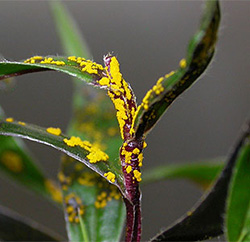
The recent arrival of myrtle rust in New Zealand has led many to question whether our biosecurity system is really world-class, particularly in keeping plant diseases out of the country. Sources: Timberbiz, Scoop Media NZ
New evidence from the Bio-Protection Research Centre, and published in PLoS Biology, has for the first time assessed just how well our biosecurity system stacks up.
New Zealand is in a unique position, having kept records of plant diseases since the late 1800s.
“This allows us, for the first time anywhere in the world, to piece together the long-term trend in plant disease arrivals and whether biosecurity measures have had an impact,” Prof Philip Hulme, of the Bio-Protection Research Centre, based at Lincoln University said.
Despite increasing numbers of international tourists and growing global trade, the number of new plant diseases appearing on our crops each year has been declining since New Zealand began improving border biosecurity in the 1980s.
“The Government and industry invest millions of dollars in keeping plant diseases out of the country, but this is the first evidence to suggest there is a tangible return on this investment,” Prof Hulme said.
“Our results suggest that without effective biosecurity the number of plant diseases found in New Zealand each year would have increased in step with the level of trade imports. The fact this isn’t the case is a significant outcome.”
But the findings are not good news for all industries, as agriculture rather than forestry reaps the greatest benefits.
“The combination of government investment in agricultural quarantine and an industry-based seed certification scheme could explain the decline in the arrival of plant diseases in the cereal and pasture sectors,” Prof Hulme said.
“In contrast, forestry biosecurity has come late to the game, especially with imports of untreated wood being permitted until relatively recently, and so diseases of forest trees are still increasing at a similar rate to our level of trade imports.”
Prof Hulme said it was important to realise that even when they were effective, biosecurity measures only slowed down the rate of pests getting into New Zealand, rather than stopping them altogether.
“We are still getting diseases coming in, but at a much slower rate than we would have, given the huge growth in international trade,” he said.
“Thus, while targeted investment in biosecurity may be effective in reducing plant diseases arriving through trade, there is still scope for improving border biosecurity and expanding disease surveillance.”







